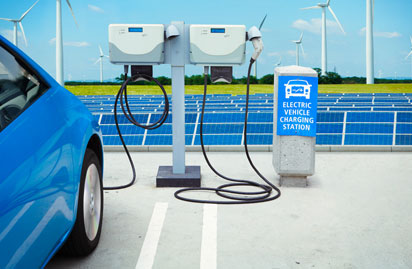February 17, 2022: The Ministry of Power released a notification regarding green hydrogen and green ammonia. Dubbed as the National Hydrogen Mission, the policy aims to boost the production of ammonia and hydrogen in India.
Now, most of us might still be wondering,
“What exactly is green hydrogen?”Well, simply put, it is an alternative to producing hydrogen the traditional way. Herein, hydrogen is produced by the use of renewable energy and low-carbon power. The energy or electricity generated for green hydrogen comes from wind, solar or hydropower. Therefore, green hydrogen is an effective way to care for the planet while fulfilling our needs as compared to grey or blue hydrogen.
Moving further, let’s break down the Ministry’s Notification on the green hydrogen policy for you.
The First Steps:
In an encouraging move, the Ministry announced a waiver of the power transmission charges for manufacturing units until the next 25 years, for projects commissioned before July 30, 2025. The Ministry also permits:
- Buying renewable power from exchanges;
- Reserve unconsumed renewable power with power distribution companies (discoms) for up to 30 days;
- Providing open access by power discoms within 15 days of application.
While these are the three key propositions discussed in the Notification, the government has made it clear that this is essentially the first phase towards making India a “hydrogen hub”. Quoting the Ministry,
"The Mission aims to aid the government in meeting its climate targets and making India a green hydrogen hub. This will help in meeting the target of production of 5 million tonnes of green hydrogen by 2030 and the related development of renewable energy capacity."
The Development Stage:
If we were to go back in time, you’d recall the launch of the ‘National Hydrogen Mission’ by the Prime Minister last year. The PM expressed his ambition to boost the growth of green hydrogen in the country. This, according to him, would also go a long way in making India an energy-independent nation.
The Green Hydrogen Policy also comes at a point when climate action has become a centre-stage conversation around the world. In fact, the Policy is also a step towards fulfilling the Prime Minister’s pledge at the COP-26 summit in Glasgow towards making the country carbon-neutral by 2070.
The Policy Benefits:
With global warming and climate change concerns increasing across the globe, green hydrogen provides a way out towards using a nature-friendly energy source. The Green Hydrogen Policy will, therefore, prove beneficial towards:
Reducing Emission: Green Hydrogen has the ability to generate large scale energy with low carbon footprint.
Clean Fuel: The Policy’s implementation would help provide clean fuel to citizens. This would also mean reduced dependence on fossil fuels such as coal and petroleum. The use of clean fuel will also reduce the import of crude oil over the years to come.
Export Hub: For the successful implementation of the Policy, India requires to get into large scale production of green hydrogen. This would not only mean a better alternative to existing resources but will also lead to the country becoming a one-stop export hub for green hydrogen and green ammonia.
Key Private Players in India
While this is not a part of the Ministry’s Notification, it is essential to recognise that several private players have set foot in this industry even before the government’s announcement.
Key private players include Reliance Industries, Adani Group, Larsen & Toubro, and Greenko. These organisations have already made commitments towards working on the production of green hydrogen and investing in creating a green hydrogen supply chain.
Other than these private players, public sector enterprises such as Bharat Petroleum, NTPC, GAIL, and Indian Oil Corporation might also enter the sector.
With several private and public sector corporations entering the market, the green hydrogen industry in India will, without a doubt, attain its desired goal.
Regulatory Steps
An essential hook to becoming a “hydrogen hub” would be to oversee the smooth functioning of the green hydrogen industry. While high network players will help with supply chain management, their entry also demands favourable regulatory steps that’ll keep the competition healthy and keep out the risk of corrupt practices.
With the Notification being the first phase towards the National Hydrogen Mission, it is contemplated that the second phase will provide answers to questions cropping up at the moment and establish rules and guidelines for the industry.
Addressing the Industry’s Demands
While we await the second phase, keeping up with the present, the Ministry has tried to address key industry concerns such as transmissions, availability of renewable power, and supply chain.
Discussing these issues, the Ministry’s notification provides for:
- Grid Connectivity: Manufacturers of green hydrogen and green ammonia shall be provided grid connectivity on priority. This step will help cut off procedural delays if any.
- Granted Incentives: Manufacturers of green ammonia and green hydrogen will get the benefit of Renewable Purchase Obligations in terms of granted incentives. These benefits can also be availed by the distribution licensee for the consumption of renewable power.
- Single Portal: Manufacturers of green hydrogen and green ammonia will be able to use a single portal for all business-related activities, including statutory clearances set up by the Ministry of New and Renewable Energy. This will ensure the coverage of the government’s ease of business scheme (Production Linked Incentive Scheme) for the manufacturers.
- ISTS Connectivity: Connectivity to the inter-state transmission system (ISTS) for renewable energy capacity set-up at both the generation and manufacturing end will be granted to manufacturers on priority.
- Port Bunkers: Manufacturers of green hydrogen and green ammonia will be allowed to set up bunkers near ports. This will help with the storage and export of green ammonia. To set up these bunkers, manufacturers can approach the port authorities, who shall provide such land at requisite charges.
In its endeavour towards generating green hydrogen, the government aims to fulfil its international commitments for clean energy and facilitate a smooth transition from fossil fuels to green hydrogen and green ammonia.






